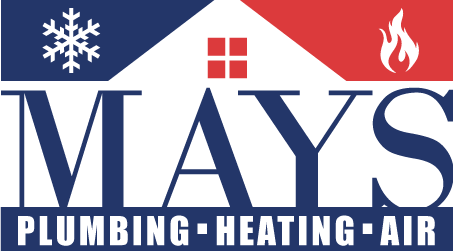How to Enhance Your Roof’s Durability with Effective DIY Waterproofing Techniques
Your roof shield is vital for the overall integrity of your home. A reliable waterproofing solution is paramount in protecting it from water damage, mold growth, and structural issues. In this article, we will explore efficient DIY waterproofing techniques that are easy to implement, ensuring enhanced durability for your roof.
The Importance of Roof Waterproofing
A waterproof roof acts as the first line of defense against harsh weather conditions. With continuous exposure to rain and humidity, the materials can deteriorate over time. Effective waterproofing can:
- Prevent leaks and water ingress
- Reduce energy costs
- Extend the lifespan of roofing materials
- Enhance property value
Common Types of Roofing Materials
Understanding roofing materials is crucial to selecting the best waterproofing method. The common types of roofing include:
- Asphalt shingles: Widely used in residential buildings; they are affordable but require proper maintenance.
- Metal roofing: Known for its durability and longevity; it is lightweight and can reflect sunlight effectively.
- Tile roofing: Offers aesthetic appeal with clay or concrete options; it requires sturdy support due to its weight.
- Flat roofs: Usually made with a membrane system; they are prone to pooling water if not properly maintained.
Essential Tools and Materials Needed
Before embarking on any waterproofing project, gather the necessary tools and materials:
- Roofing sealant or waterproof membrane
- Brushes or rollers for application
- Ladder to access the roof securely
- Safety gear, including gloves and goggles
- Caulk gun for sealant application
- Cleaning supplies, such as a broom and pressure washer
DIY Waterproofing Techniques
1. Roof Cleaning
The first step in waterproofing is thorough roof cleaning. Dirt, algae, and moss can hinder the effectiveness of waterproofing solutions.
- Remove debris: Use a broom to sweep off leaves and branches.
- Moss treatment: Apply a moss killer to affected areas. Allow it to dry, then scrub off remnants.
- Pressure wash: Use a pressure washer to remove stubborn stains and dirt build-up.
2. Application of Roofing Sealant
Applying a good quality roofing sealant or waterproof membrane can significantly enhance durability.
- Select the right sealant: Choose a product that is appropriate for your roofing material.
- Application: Using brushes or rollers, apply the sealant evenly across the roof surface. Be diligent in covering all areas, especially seams and around protrusions like chimneys.
3. Use of Membranes for Flat Roofs
For flat roofs, a waterproof membrane is advantageous in preventing water pooling.
- Choose the right membrane: Options include EPDM, TPO, and PVC membranes.
- Installation: Lay the membrane over the entire surface, ensuring proper sealing at the edges. Helical or mechanical fasteners may be necessary for secure attachment.
4. Repairing Roof Joints and Flashing
Flashing and joints are common areas for leaks to occur. It’s necessary to inspect and repair them.
- Inspect flashing: Check for areas that may have come loose or deteriorated.
- Sealant application: Apply roofing sealant along seams and joints to create a watertight seal.
5. Gutter Maintenance
Proper gutter maintenance is crucial for directing water away from the roof and preventing pooling.
- Clear gutters: Remove debris and blockages to ensure optimal water flow.
- Install gutter guards: Consider installing guards to prevent future blockages.
6. Regular Inspections and Maintenance
Preventive maintenance is essential for the longevity of your waterproofing efforts.
- Schedule regular inspections: Conduct inspections annually, or after severe weather events, to identify potential issues.
- Address minor repairs: Attend to small leaks and issues promptly to prevent escalation.
Safety Precautions
Safety is paramount when working on your roof. Take the following precautions:
- Always wear appropriate safety gear.
- Ensure your ladder is stable and positioned correctly.
- Consider hiring a professional for high or steep roofs.
- Avoid working in inclement weather conditions.
Conclusion
By implementing these DIY waterproofing techniques, you can enhance your roof’s durability and protect your home from water damage. Regular maintenance, thorough cleaning, and prompt repairs are pivotal in prolonging the life of your roof. Investing time and effort into these techniques not only secures your home’s structural integrity but also contributes to your peace of mind. A well-maintained roof strengthens the value of your property and ensures a safe living environment for you and your family.
Author: STAFF HERE HILTON HEAD
The HILTON HEAD STAFF WRITER represents the experienced team at HEREHiltonHead.com, your go-to source for actionable local news and information in Hilton Head Island, Beaufort County, and beyond. Specializing in "news you can use," we cover essential topics like product reviews for personal and business needs, local business directories, politics, real estate trends, neighborhood insights, and state news affecting the area—with deep expertise drawn from years of dedicated reporting and strong community input, including local press releases and business updates. We deliver top reporting on high-value events such as the RBC Heritage golf tournament, Hilton Head Island Wine & Food Festival, and the Gullah Celebration. Our coverage extends to key organizations like the Hilton Head Island-Bluffton Chamber of Commerce and Community Foundation of the Lowcountry, plus leading businesses in tourism and hospitality that power the local economy such as Sea Pines Resort and Sonesta Resort Hilton Head Island. As part of the broader HERE network, including HEREAiken.com, HEREBeaufort.com, HEREChapin.com, HERECharleston.com, HEREClinton.com, HEREColumbia.com, HEREGeorgetown.com, HEREGreenwood.com, HEREGreenville.com, HEREHiltonHead.com, HEREIrmo.com, HEREMyrtleBeach.com, HERENewberry.com, HERERockHill.com, and HERESpartanburg.com, we provide comprehensive, credible insights into South Carolina's dynamic landscape.




 Mays Contracting
Mays Contracting

